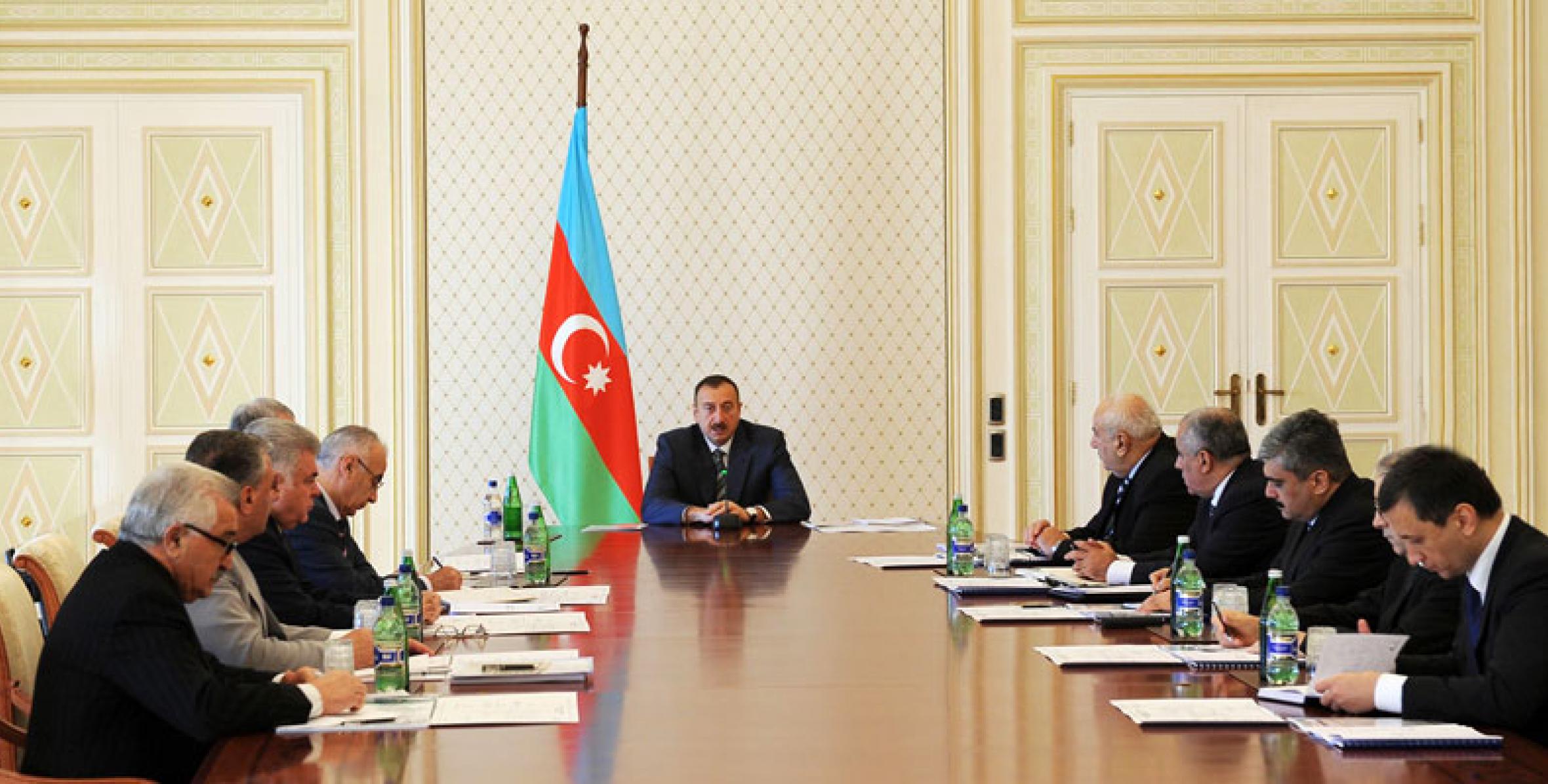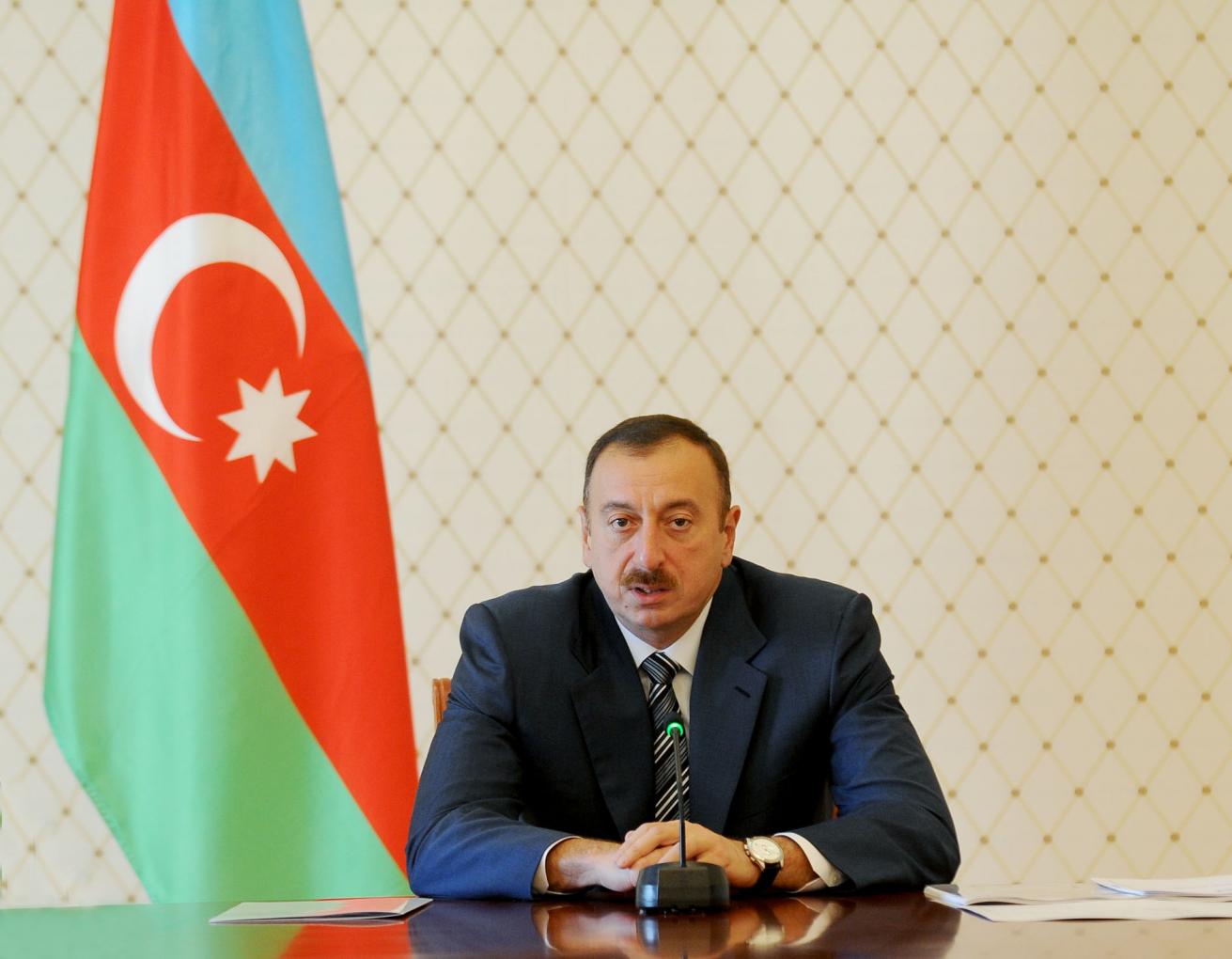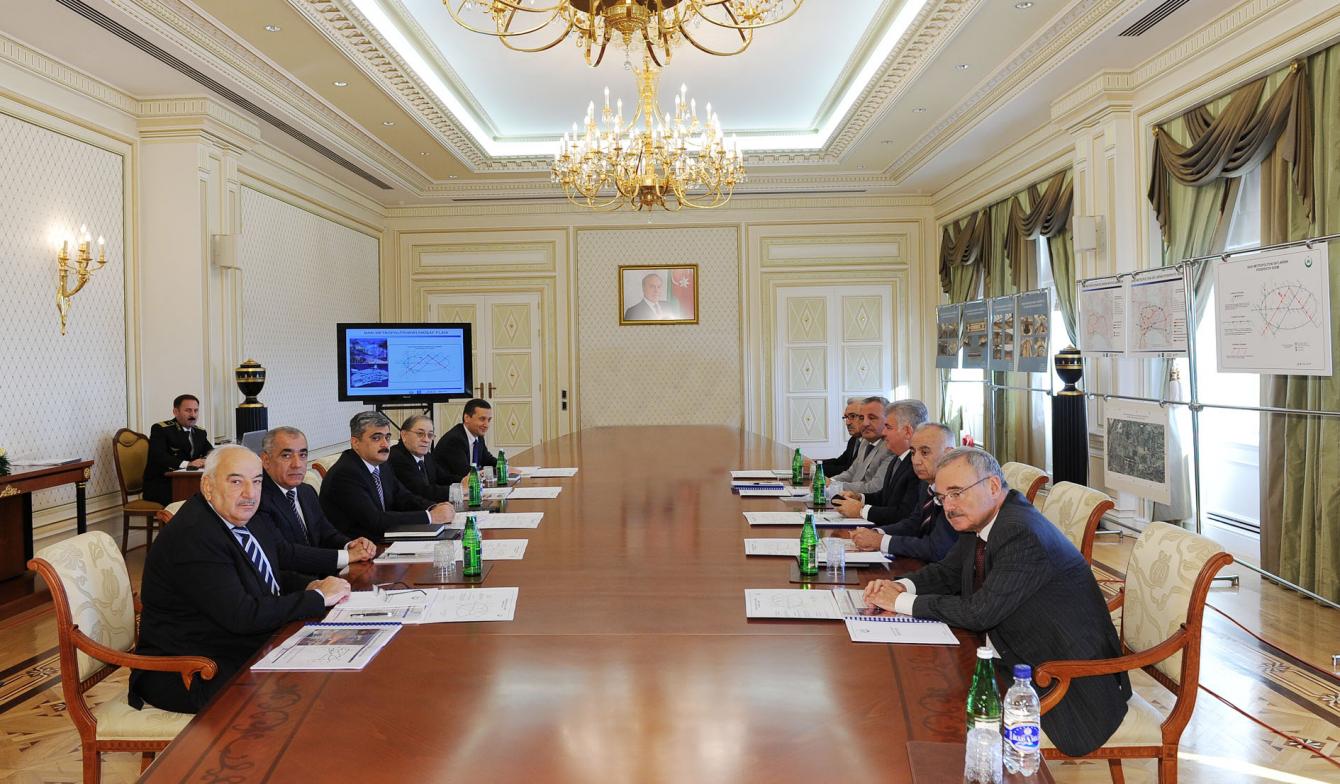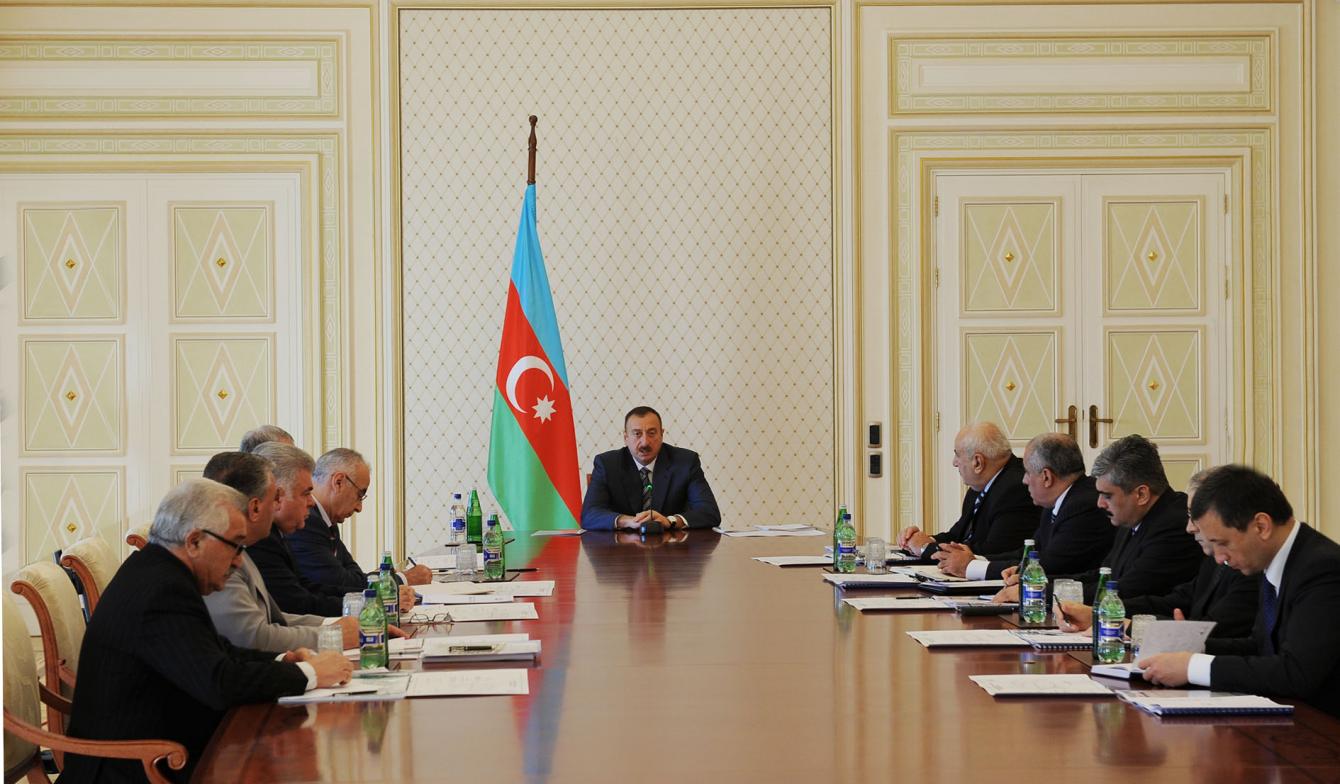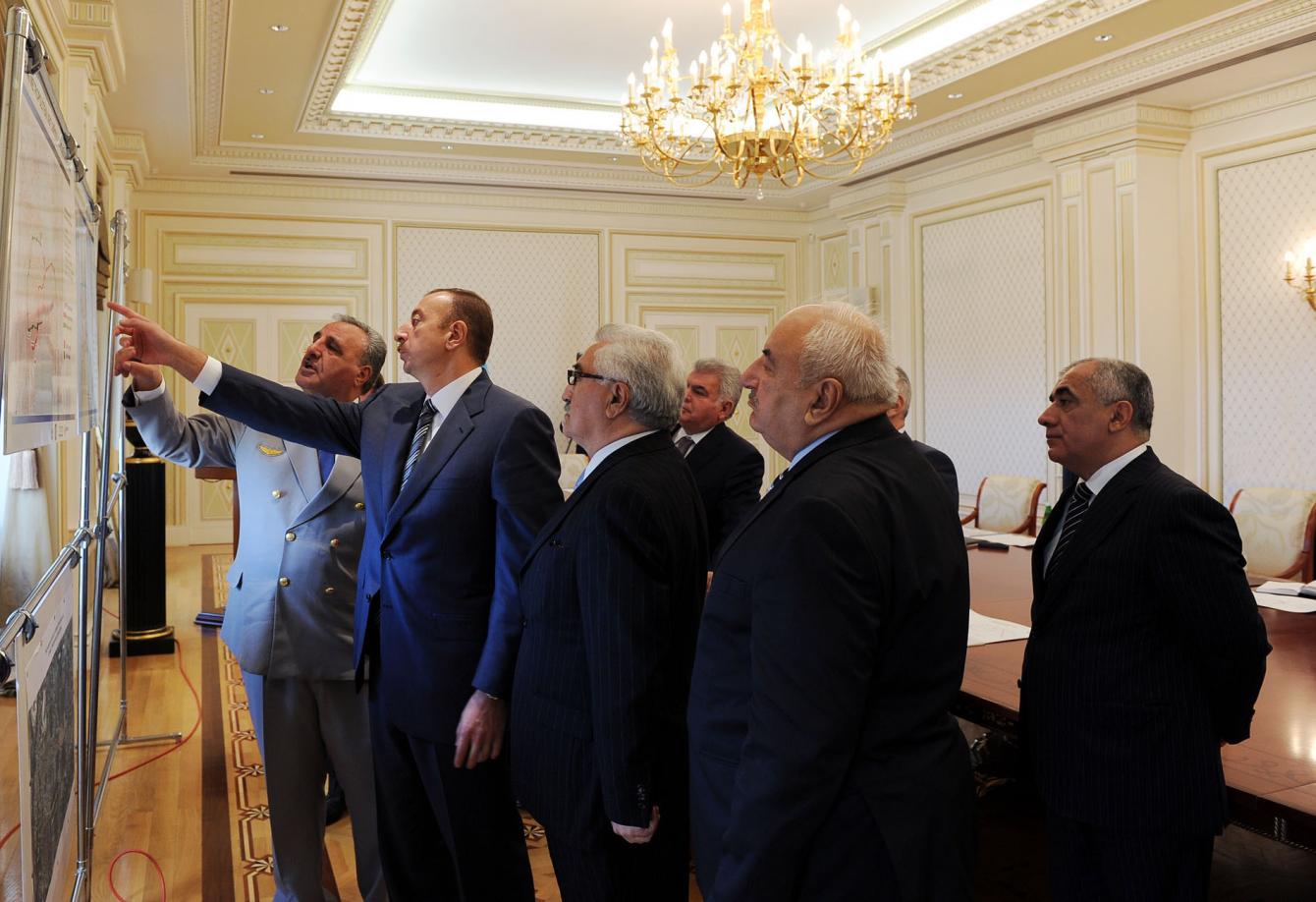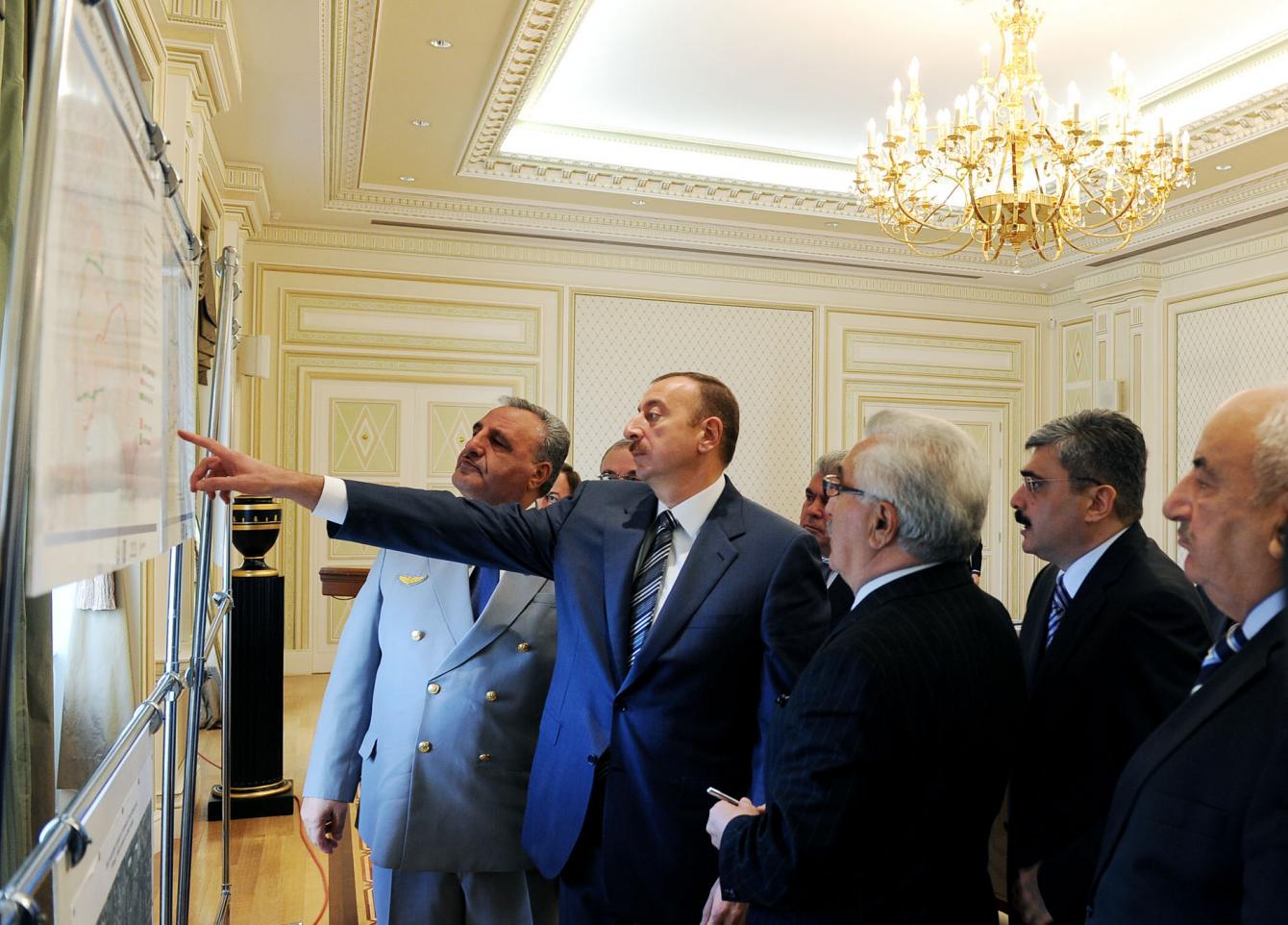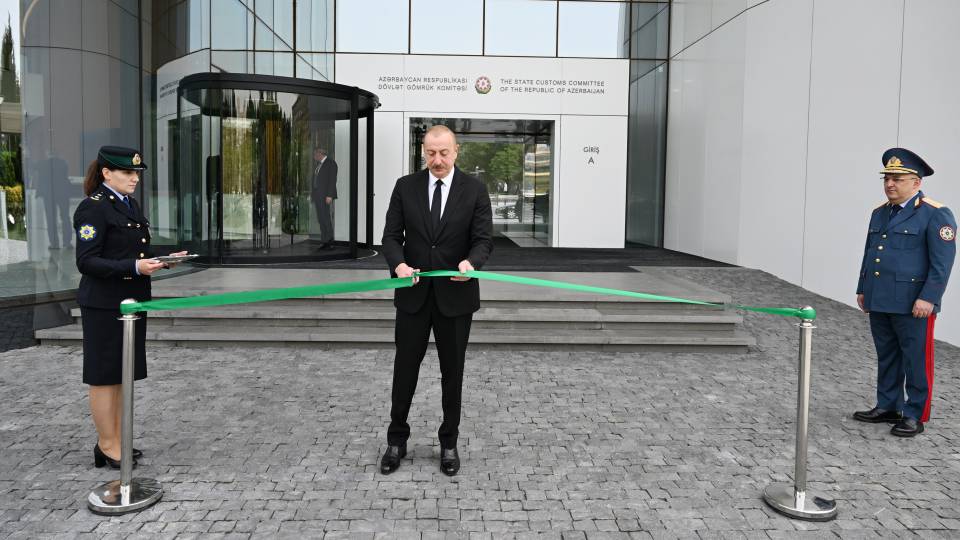Meeting chaired by President Ilham Aliyev and dedicated to the perspective plan on the development of the Baku Underground has been held
The meeting was opened by the head of state.
Opening remarks of President Ilham Aliyev
- Extensive work is under way to create and expand the country’s transport infrastructure. Thanks to the investment made in recent years, the transport sector has been developing rapidly and successfully. New and modern transport facilities are emerging both in Baku and various parts of the country. Yesterday we laid the foundation for a new commercial seaport in Baku. Its construction will considerably expand our transportation opportunities, while Azerbaijan will be able to use its transit capabilities with greater efficiency. The development of the transport sector plays an important role in the success of all countries. In Azerbaijan, these issues have always been in the spotlight.
Today's meeting is dedicated to the development of urban transport. In particular, we will discuss the development program of the Baku Underground. A lot has been done in recent years to develop urban transport. We have laid and renovated 170 km of roads, built 15 overpasses and 30 pedestrian crossings in Baku, some are still under construction. A center of intellectual transport management meeting modern standards is being established in Baku. I am sure that when the center becomes operational, the transport regulation process will be even more successful.
More than 2300 buses have been imported in an effort to develop urban transport and bring it into compliance with modern standards. This creates better conditions for people and is also a very important tool for addressing the problem of congested traffic. If we hadn’t built new bridges, overpasses and pedestrian crossings in Baku a few years ago, the traffic in Baku would be completely jammed today because the narrow streets in the city center were causing problems. On the other hand, there were roundabouts at the city’s entrances and exits. We can say that most of these roundabouts have now been removed. Instead, we have built modern bridges and overpasses. The road to the Heydar Aliyev International Airport used to be in a very poor condition. Besides, there were big traffic jams at every intersection. In rush-hours, traffic at the roundabout near the Azizbayov metro station was always stuck for half an hour, 40-50 minutes. Then there were Sabunchu and other roundabouts. Each of them caused jams, and the city traffic was practically paralyzed.
We have taken all necessary measures on time and allocated significant financial resources. The Ministry of Transport is doing this work with a great professionalism and taste. Our bridges and overpasses are not just transportation infrastructure but also a pattern of urban architecture. They have a good appearance and design, are beautiful and modern. People no longer have to wait at a roundabout to go from the city center to the airport and other directions. We set a goal: the process of urban transport in general must meet international standards. There are fewer traffic lights on our roads now. Thus all conditions are available for convenient traffic.
We have made the road to the airport twice broader than before. Some seem to forget about this work today. This is natural because people quickly get accustomed to good conditions. Our goal is to apply the highest standards to Azerbaijan and Baku so that our citizens could enjoy the benefits of advanced technologies. Today the road to the airport has 8 and 12 lanes. On the other hand, we have constructed another road from Zig to the Heydar Aliyev International Airport. This six-lane concrete road did not exist before. I want to repeat that this work is a very important step towards regulating urban transport.
Roads are being renovated and built in different parts of Baku, new directions are being opened. Roads are built from Baku to the Heydar Aliyev International Airport, Mardakan, Bilgah, Kurdakhani, Pirshagi and Sumgayit. This means the opening of a new artery, a new direction. The villages located there will have a convenient link with each other, with the city, and with Sumgayit. In addition, there will be direct access to the circular road which will open in the near future. The circular road is almost ready. We may celebrate its opening in a few days. This is also a unique and irreplaceable hub for the city. From now on, the vehicles proceeding from the north, south and west will be using the circular road without having to enter the city. This road, as any other, meets the highest standards.
Urban transport is a priority issue for any growing city. We know that the problem of congested traffic has led to very major implications in some cities. In big cities, people spend hours idling in traffic jams. Sometimes a flight to another city takes less time than a trip from the city center to the airport. We could have faced these problems too if we hadn’t taken very serious steps on time. However, these issues require major investment. I can say that in contrast to trunk roads, i.e. roads to districts, the expansion and construction of new urban roads does not fetch significant economic benefits. Of course, when truck roads are laid to certain places, there is excitement, jobs open and opportunities expand. The construction of such roads within the city is of purely social nature. The citizens of Azerbaijan should enjoy comfortable roads. The quality of roads in Azerbaijan, especially in Baku, is improving with every year, the latest technologies are being applied. We are seriously dealing with these issues down to the smallest detail.
One of the main problems of Baku roads was their poor quality. These roads were not built very well, they were not repaired either. Besides, the problem was aggravated by a large number of manholes. They were installed in such a way that after a car wheel hit a manhole several times, the vehicle required repair. But we have imported modern technology and equipment, and one can hardly feel anything when the car passes over a manhole now. We must ensure that effective technologies are applied in most streets of our city, and such practice already exists. Of course, this requires large resources. But we must do it anyway because it serves the development of our city and facilitates comfortable traffic. I want to say that we have allocated major funds for this purpose. We envisage a lot of money in the state budget every year. We will continue this work in the future.
On the other hand, Azerbaijan is developing successfully, our financial resources are growing and economic opportunities expanding. We must make sure that our country becomes one of the most developed countries in the world. One of the most important conditions for that is, of course, the conformity of urban infrastructure with the highest standards.
This meeting is dedicated to the Baku Underground development plan. These issues are in the spotlight. The Baku Underground has a very long history. In the Soviet Union, Baku was one of the first cities to open the underground service. First stations were commissioned in Baku in 1967. Things progressed quite fast. In the 1970s, under the leadership of great leader Heydar Aliyev, the construction of underground stations in Baku progressed very rapidly. Of course, after the collapse of the Soviet Union these processes were suspended and there was no underground construction for many years. Projects launched in previous years were gradually implemented, but overall this issue remained out of focus. It was natural because the country was confronted with more serious problems in the first years of independence and their solution required mobilization of all forces. Unemployment, poverty, domestic problems of our compatriots affected by aggression, economic recession, industrial standstill. In other words, we were faced with problems associated with an economic downturn. Therefore, we tried to use the limited financial resources we had to deal with the most pressing issues. Of course, there wasn’t enough money to develop the underground service. Now the situation is different. I want to repeat that we have sufficient financial resources, we feel very comfortable and confident. Therefore, the construction of the underground, the cheapest type of urban transport, receives more attention.
In recent years we have seen excellent results of this work. We commissioned the “Nasimi” underground station in 2008, the “Azadlig Prospecti” (Freedom Avenue) and a new transfer station “28 May” in 2009. Today this work continues, sufficient funds are allocated in the state budget every year. Two years ago I signed a special resolution on the preparation of a development plan for the Baku Underground. Funds have been allocated, and today we will discuss the initial outline of the plan.
The underground accounts for 30 per cent of urban transport. The fare in the Baku Underground is lower than on any other public transport service and is the lowest in the CIS. As compared to European cities, it is 10-15 cheaper. By keeping the underground fare low, we are contributing to the solution of social problems. Today, Azerbaijan has a market economy. Private companies providing services in the public transport sector are making profit. This is natural because they are part of the market economy. Practically all other public entities and companies operate with a profit. Of course, if necessary, the government provides funds from the budget to strengthen the activities of public companies. But in their day-to-day activities our public companies operating in the energy sector work on the basis of market principles.
The same holds true for the transport sector. For example, in air transport the government allocates funds, purchases aircraft, builds new airports and, if necessary, provides one-off subsidies. But in general this sector works with a profit. So does the maritime transport. We have a large tanker fleet. In recent years, 12 tankers and dry-cargo vessels were purchased from the state budget and transferred to the Caspian Shipping Company. Without this the shipping company could not operate with a profit. But this is a one-off and the company derives income from the operation of tankers.
With the underground things are somewhat different. New stations are being built using public funds. This is an issue that requires major resources. This year alone about AZN 200 million was and will be spent on the underground. Also, the government purchases new carriages. More than 150 cars have been acquired in recent years, and those using the underground can see that. At the same time, the underground operates on government subsidies. The fare is 15 gapiks. I was informed yesterday that 49 gapiks is spent on every passenger, i.e. three times as much. These are direct subsidies by the government. I just want to indicate that the underground is not an area where one can expect return on investment. This investment does not pay off, we know that. Nevertheless, we do it for the convenience of people and for the management of urban transport.
The country is still facing many issues, there are spheres in which we must invest and we do. Of course, we need to use our financial capabilities economically, and we are doing that. We are trying to do this job most efficiently. On the other hand, we are well aware that the development of the underground will bring comfort to people and will play an important role in the regulation of public transport.
We will discuss these issues today.
X X X
Then discussions were held on specific issues regarding priority directions of the underground and future work in this area.
The head of state was shown drawings of the Baku underground and proposed lines.
X X X
Closing remarks by President Ilham Aliyev
I appreciate the work of all the organizations entities who contributed to the preparation of this plan. Both local and foreign companies were involved. A comprehensive and thorough program has been prepared. It will cover 20 years and require large funds. Some figures were mentioned here. If we undertake this work, it envisages the investment of several billion manats.
Of course, this is a very large sum. We need to adapt this investment to our financial capabilities. The state investment program for each year should envisage funds for the construction of the underground. We must divide this long-term program into stages. Suggestions to that effect have been made here. The first phase would cover 2011-2015. Of course, if our material resources permit, we can envisage more work in the next five-year program. We must be ready for that. In any case, this master plan provides for such opportunities. We already know what its last stage will consist in. The entire program has been carefully thought-out. We will simply carry out this work in stages, identify priorities and adapt it to our financial capabilities.
Our intention is open, clear and unequivocal: to move the underground construction in Baku forward at a high pace. This will provide great support for urban transport and enhance the capacities of this comfortable and safe mode of transport. In general, it is very important for our overall development.
We must do this work proceeding from international experience. The underground construction in Baku has a great history. I have already spoken about this. But today new technologies are being used. We must use them in Azerbaijan, in Baku. The existing experience is very valuable, but the present experience will certainly help to do the job more effectively and ensure maximum quality. It was mentioned here that new equipment and machinery is being purchased. We must make sure that this is the latest equipment available. The construction of tunnels and all other technical issues must be dealt with at the highest level.
I have no doubt that the experience of developed countries was used in developing this plan because foreign companies were also involved. We must analyze and apply the best practices to Baku.
However, special attention should be paid to design. Since its appearance, in the Soviet Union at least, the underground was also a model of architecture. A lot of attention was paid to the design of the underground in Baku. We should not forget about that today. We want new stations to have a smart design, be convenient and beautiful.
At the same time, we are reconstructing the stations built in previous years. In particular, the appearance and the interior design of the “Icheri Sheher” (Old City) station has been completely changed, which makes our city even more beautiful. Work is now under way on the “Azizbayov” station. A beautiful architectural complex is envisaged there as well. Renovation work inside the station is also ongoing. Of course, we will always keep these issues in mind when building new stations. At the same time, we must gradually renovate and upgrade old stations as well. Perhaps this should be part of the development plan. Additional funds should be envisaged for new escalators, renovation work and, if necessary, replacement of external structures of underground stations to make them look nicer. These stations are part of the city architecture. The city has wonderful architecture – both ancient and modern. We must consider these two factors.
It was indicated here that attention is being paid to safety. This issue must be finalized by the end of the year. I have issued an order to install CCTV cameras not only in the underground but also throughout the city. Such cameras already operate in different parts of the city. This is highly important from a safety standpoint. Also, these cameras have helped solve several crimes. At the same time, the cars breaching traffic rules can thus be tracked.
In other words, I want to reiterate that we have mobilized all our resources to undertake this immense work. I want to state again that this is a long-term program which will cover at least 20 years. We must work hard to ensure that the tasks set forth today are fulfilled and these stations are built. This work requires great skill, professionalism and financial resources. I am sure that we will do this work in time and with high quality, and create new and wonderful opportunities for city residents.

